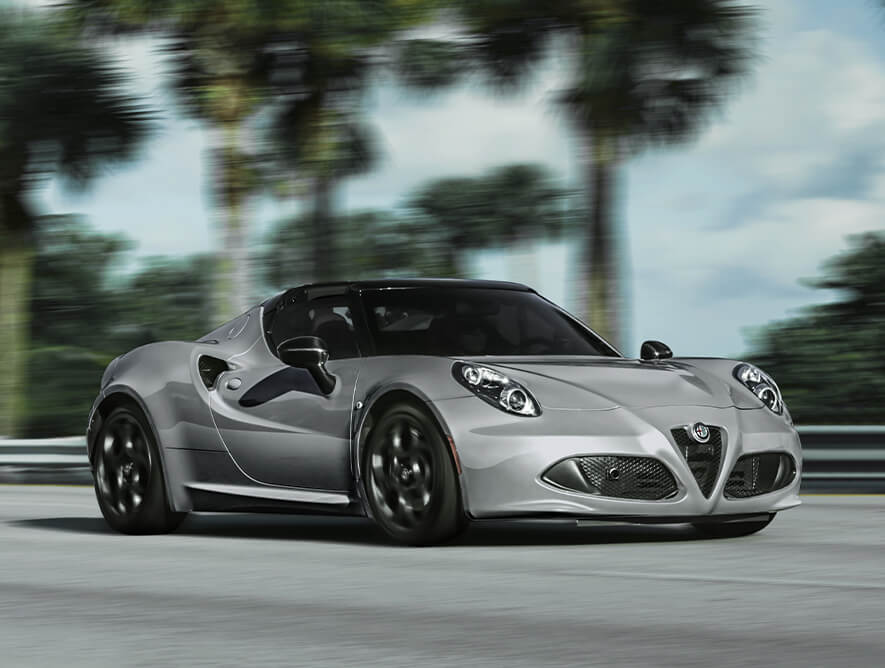
Alfa Romeo: 110 Years of Heritage and History

As we move down the road of life, we learn that not everything endures—people change and the world changes with them. Good or bad, there is upheaval. Few constants exist.
And so it is that it’s refreshing—even reinvigorating—when something does endure. When values are met, benchmarks exceeded, and a commitment to the return to those ideals is consistently realized.
So it is with Alfa Romeo—an unconditional, lasting automotive love story. And now, on the 110-year anniversary of the company’s founding, we look back at what got the brand here and where they’re going next.
Spoiler alert: Great things have happened. Even better things are yet to come.
The 411 on A.L.F.A
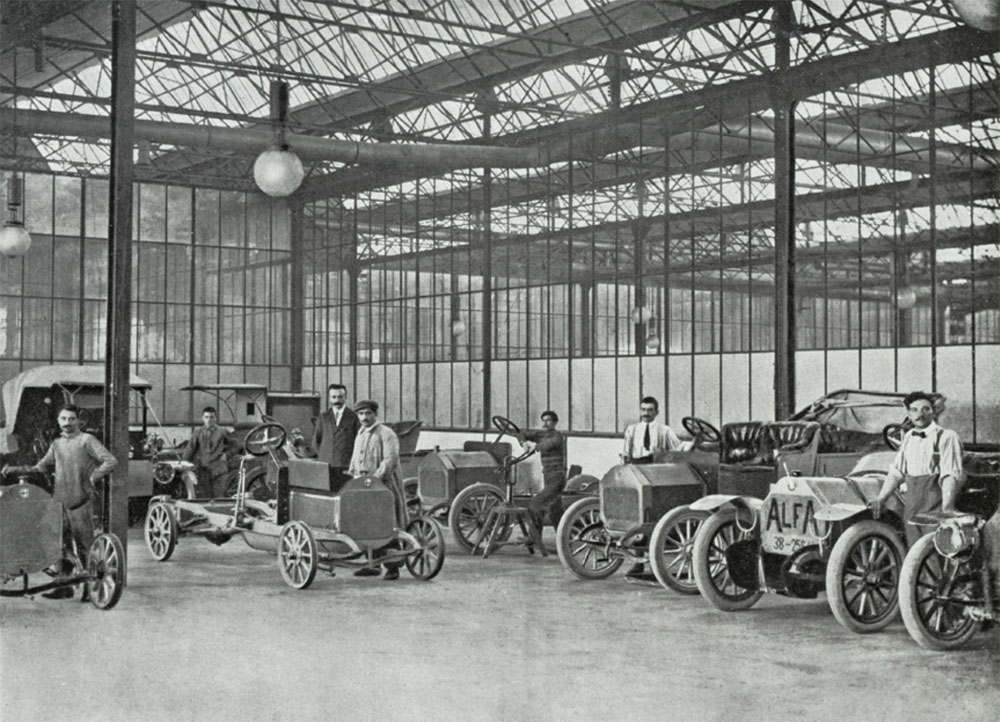 The year was 1910. A group of entrepreneurs and businessmen in Milan, Italy decided to do what they did best—get inventive and take a risk. Together, they acquired Società Italiana Automobili Darracq (the Italian arm of the French car manufacturer) and leveraged their workshops on the city’s outskirts to establish A.L.F.A. (the Anonima Lombarda Fabbrica Automobili, or if you prefer, the “Lombard Automobile Factory, Public Company”).
The year was 1910. A group of entrepreneurs and businessmen in Milan, Italy decided to do what they did best—get inventive and take a risk. Together, they acquired Società Italiana Automobili Darracq (the Italian arm of the French car manufacturer) and leveraged their workshops on the city’s outskirts to establish A.L.F.A. (the Anonima Lombarda Fabbrica Automobili, or if you prefer, the “Lombard Automobile Factory, Public Company”).The seeds were sown, but a company without a product isn’t much of a company. Realizing the need to make a splash, A.L.F.A. went to the best, consulting Giuseppe Merosi. Merosi didn’t just have a perfectly Italian name; he was also a top-flight engineer who brought a wealth of racing engine knowledge to the fore, as well as expertise gleaned from his time with Edoardo Bianchi. The fruits of Merosi’s labor would bear the exciting “24 HP.”
A precursor to the contemporary sports sedan, the 24 HP boasted a 4.1-liter engine that generated 42 horsepower and topped out at a max speed of 62 mph (100 kph). That was whiplash inducing speed at the time, trust us. While just 50 units were sold in its first year, it mightily made its name at the track. Enrolled at the 1911 Targa Florio competition, it led most of the race prior to an unfortunate off-road incident that ended its day. Despite the setback, its endurance racing credentials were clear, and A.L.F.A. was on the map.
Driving an A.L.F.A.? Definitely Not a Drag
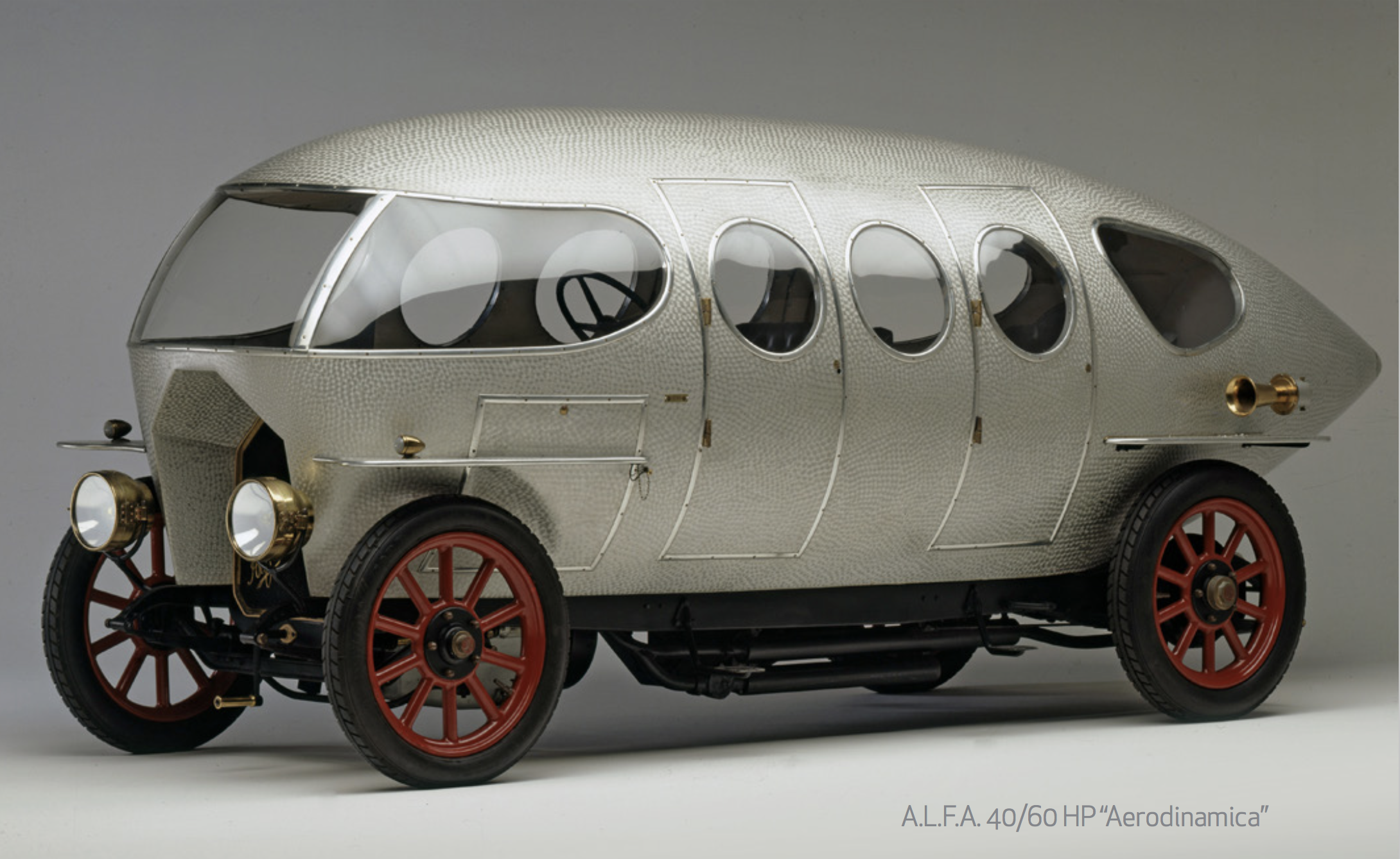 If you thought one of the ‘As’ in A.L.F.A. stood for “aerodynamics,” you’d be forgiven. The manufacturer’s ascent brought with it powerful advancements in drag-reducing design.
If you thought one of the ‘As’ in A.L.F.A. stood for “aerodynamics,” you’d be forgiven. The manufacturer’s ascent brought with it powerful advancements in drag-reducing design. In the early 20th century, the concept of aerodynamics was an emerging art. After all, the horse-and-carriage design had reigned supreme for so long that any significant divergence was a revolutionary upheaval. But upheave A.L.F.A. did.
Among the visionaries for a more drag-free automotive future was Count Marco Ricotti of Milan. He commissioned Carrozzeria Castagna to build a completely enclosed, all-metal driving machine with circular windows. The basis for that machine? None other than A.L.F.A.’s own 40-60 HP vehicle. Ricotti and Castagna’s resulting speedster would be dubbed the “Aerodinamic” and would achieve a top speed of 86 mph (139 kph)!
A Great Icon Deserves Great Iconography
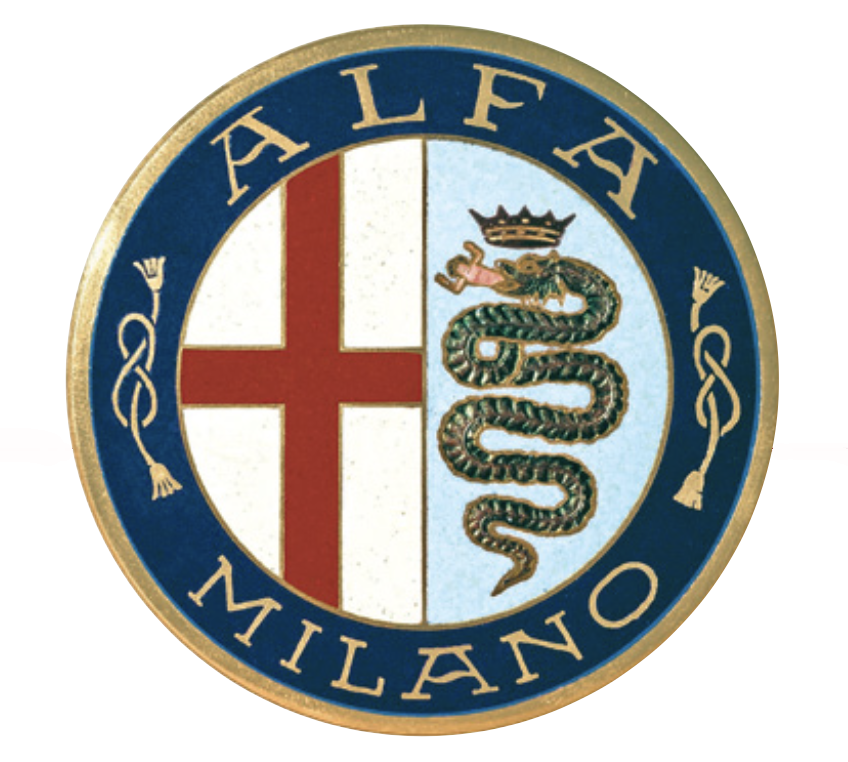 As A.L.F.A. pressed forward with tuning engine reliability and forwarding vehicle aerodynamics, another issue became pressing—brand representation. How would the world see the emerging force in the automobile world?
As A.L.F.A. pressed forward with tuning engine reliability and forwarding vehicle aerodynamics, another issue became pressing—brand representation. How would the world see the emerging force in the automobile world? The idea for Alfa Romeo’s logo came at a Milanese tram stop not long following the 1911 Targa Florio. Romano Cattaneo, an A.L.F.A. designer, sat awaiting the arrival of tram #14 at Piazza Castello. Enjoying the view of Filarete Tower, it dawned on Cattaneo that the medieval coat of arms of the Visconti family, the “Biscione Visconteo,” was one mighty dapper piece of design.
Giuseppe Merosi proved delighted by the aesthetic, and after some workshopping, the two men settled on a singular style, with the Biscione dragon on one side and the red cross/white background of the City of Milan on the other. Savoy knots were added in a hat-tip to the royal family, with “ALFA” and “MILANO” decorated in gold above and below.
Although the logo would be tweaked throughout the decades, the core design has endured, much like Alfa Romeo itself.
What’s In a Name?
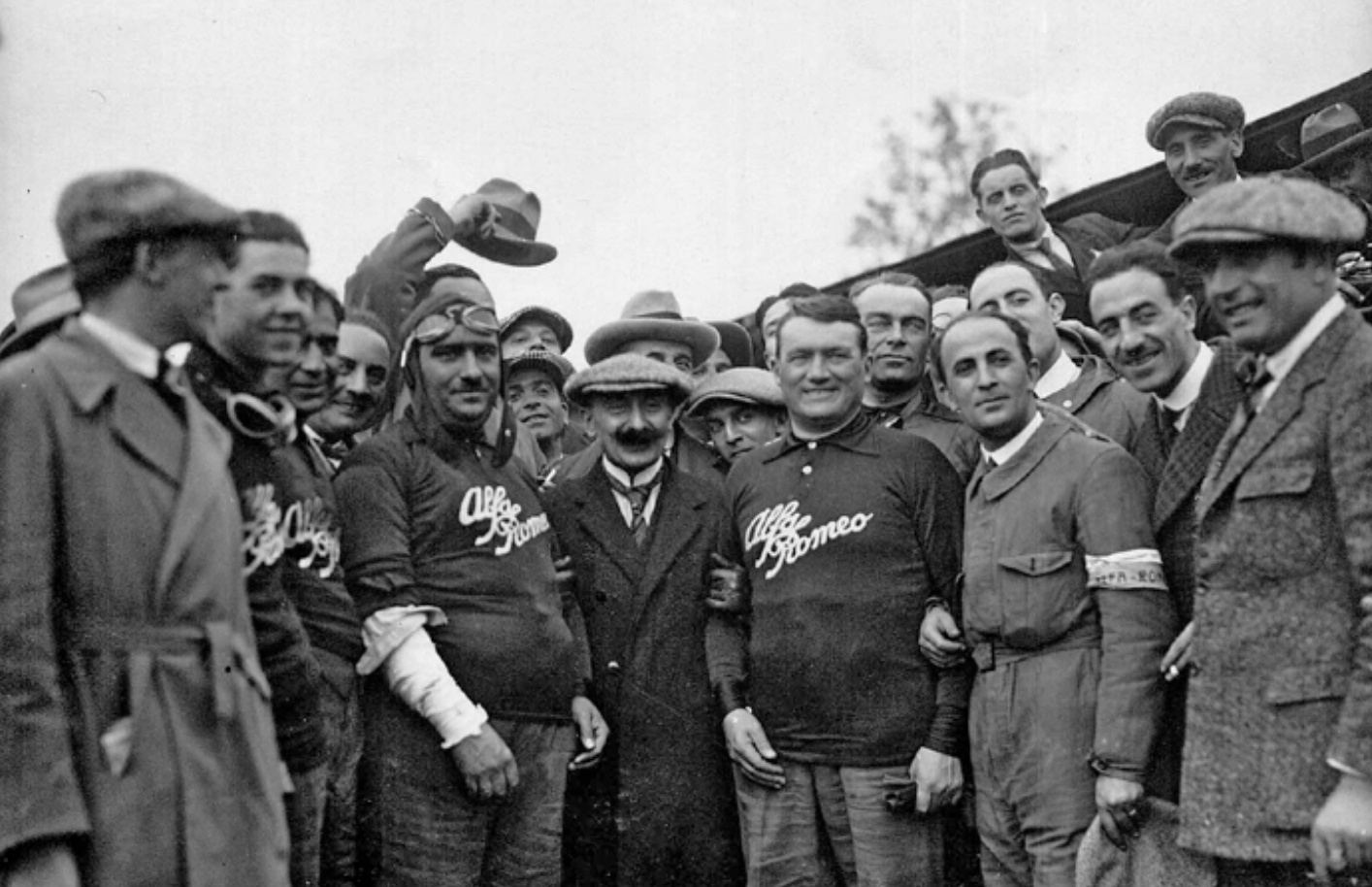 Just like the logo, A.L.F.A.’s name would be subject to evolution and refinement. Although the company’s stature was quickly becoming supercharged—by 1915 the 2,500-employee manufacturer was elevating performance industry-wide thanks to the influence of its 24 HP, 15 HP and 40/60 HP vehicles—global events would put all that on pause.
Just like the logo, A.L.F.A.’s name would be subject to evolution and refinement. Although the company’s stature was quickly becoming supercharged—by 1915 the 2,500-employee manufacturer was elevating performance industry-wide thanks to the influence of its 24 HP, 15 HP and 40/60 HP vehicles—global events would put all that on pause.During World War I, A.L.F.A. would pivot towards the production of military equipment, including ammunition and aircraft engines, under the auspices of Naples-bred entrepreneur, Nicola Romeo. Once soldiers found their way home back to families across Europe, however, car production resumed in 1919 and Nicola would be honored for his war-time leadership: the manufacturer’s namesake was changed to “Alfa Romeo.”
Everything since then? Well, it’s certainly been something to cheer about.
Obviously Italian
Since 2014, North American consumers have been treated to the undeniably stellar ethos of the Alfa brand, first with the 4C Spider and now with the Giulia and Stelvio.
When it’s said Alfa Romeo’s modern machines are “obviously Italian,” it’s indicative of the uniquely scintillating style you can see right away, even across a parking lot or barreling down a highway. But what lies beneath?
Answer: Plenty.

2020 Giulia
The base Giulia RWD comes with an eight-speed automatic transmission paired to a 280 HP, 2.0L turbocharged four-cylinder engine that’s good for a 0 to 60 MPH time of only 5.5 seconds. Other standard features include:
8.8-inch touchscreen information and entertainment display
Apple CarPlay and Android Auto support
SiriusXM integration
Start/Stop Ignition and passive entry with Remote Vehicle Start
Full-Speed Forward Collision Warning with Active Braking
The Giulia Quadrifoglio ups the stakes and dazzles with a 505 HP, all-aluminum 2.9L twin-turbo V6 engine capable of a 0 to 60 MPH of 3.8 seconds and a top speed of 191 MPH.
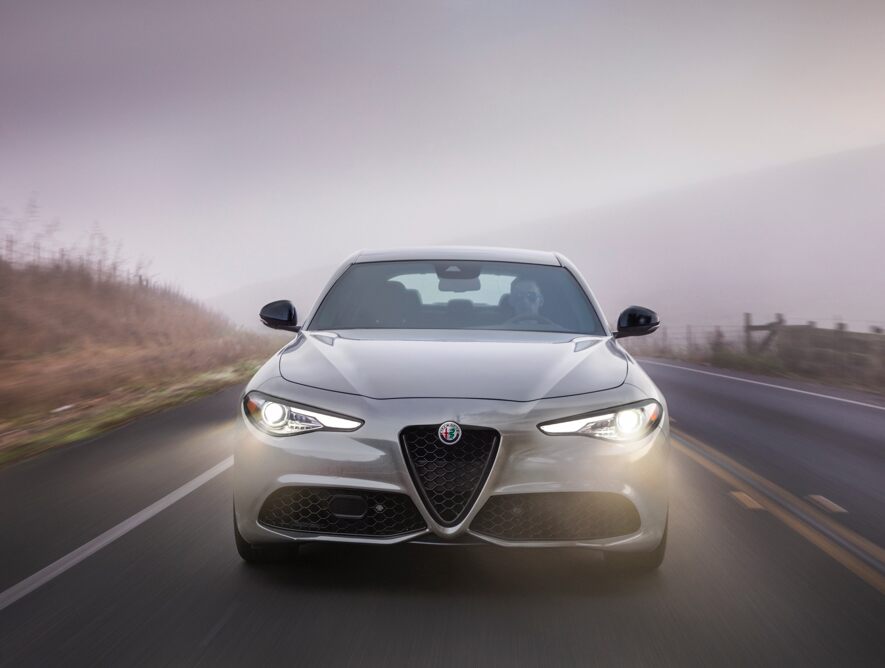
2020 Stelvio
Like its sedan counterpart, the base Stelvio RWD comes standard with a 2.0L turbocharged four-cylinder engine paired with an eight-speed automatic. Satisfying speed is had thanks to a 0 to 60 MPH time of just 5.5 seconds. Other standard features include:
Power tailgate
8.8-inch touchscreen information and entertainment display
Apple CarPlay and Android Auto support
SiriusXM integration
Start/Stop Ignition and passive entry with Remote Vehicle Start
Full-Speed Forward Collision Warning with Active Braking
The Stelvio Quadrifoglio stuns and sizzles with an unbelievable all-aluminum 2.9L twin-turbo V6 engine that produces 505 HP and 443 lb.-ft. torque. The all-wheel-drive wonder whips from 0 to 60 MPH in only 3.6 seconds, and stopping power is ensured by a Brembo six-piston high-performance brake system.
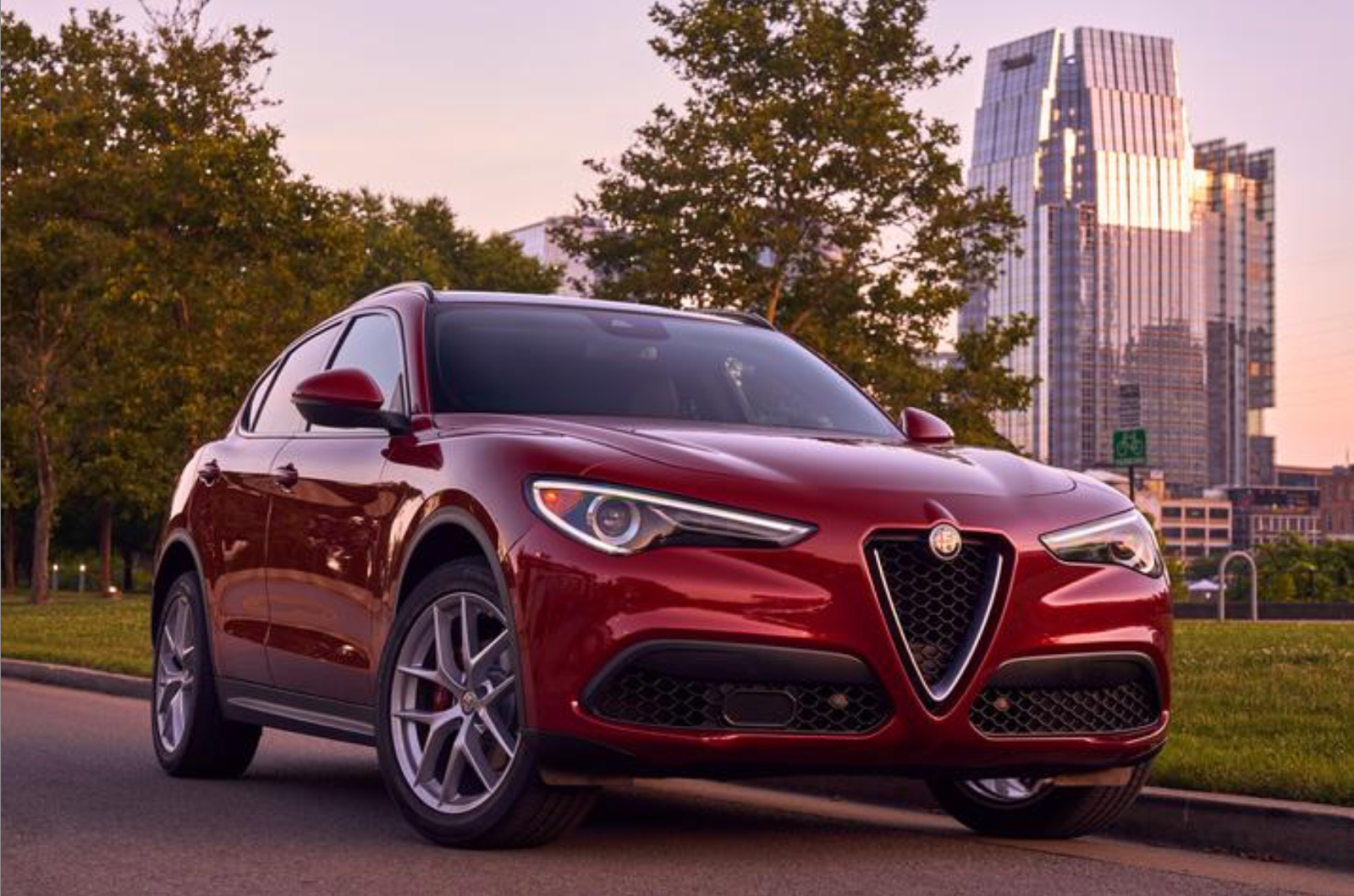
2020 4C Spider
The sportscar other sportscars wanna be when they grow up.
The 2020 Alfa Romeo 4C Spider comes packed with a goosebumps-inducing 237 HP, 258 lb.-ft. torque turbocharged four-cylinder engine that rockets to a 160 MPH top speed and accomplishes a 0 to 60 run in only 4.1 seconds. Other standard features include:
Alfa DNA Pro Drive Mode Selector with Race Mode
Rear back-up camera with rear parking sensors
Carbon fiber monocoque chassis
